
views
Getting the Right Supplies

Obtain a building permit. You will need to check with your local municipal and\or county building and\or planning and zoning to get a building permit before you do anything. Call or visit their offices to find out what you are required to do to get a building permit, and then go through the process and obtain your permit before you build anything.
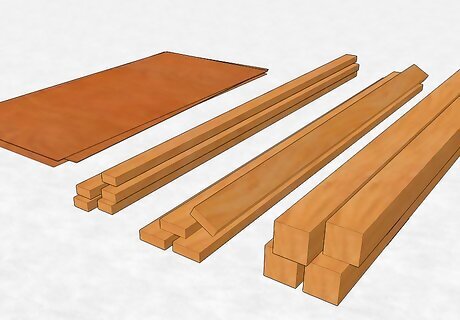
Get the necessary wood. In order to build a pole barn, you will need to start with the right wood. The name “pole barn” can be slightly misleading, as you have the option of not only using poles but also square posts as well. You also are not limited to the construction of a barn, but any outdoor structure you would like including sheds, workshops, and garages. You can use regular square posts, round poles, or old utility poles to build your structure. If you would like, you have the option of using logs you've felled or found on your own. Whatever wood you use, make sure that it is pressure-treated and rot resistant so that the integrity of your structure is not placed in jeopardy. You will need 2x4s and 2x6s to frame the structure and add the roof trusses and lumber for the roof framing. Use plywood to create the walls. You have the option of adding wood siding on the outside of the plywood to give added appeal to the appearance.
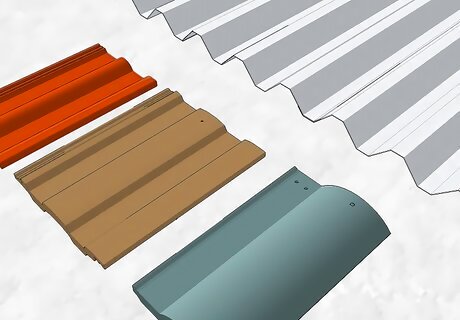
Choose your roof. Most pole barn roofs are made from metal roofing, because they are inexpensive, easy to install, and last a long time. A metal roof is also much better than shingles or rolled roofing if the structure is large, especially in areas where it snows. However if you don't find metal roofing aesthetically pleasing, you have the option of installing shingles. Make sure you have rust resistant roof metal for the roofing. You will also need a ridge cap to cover the center of the roof.
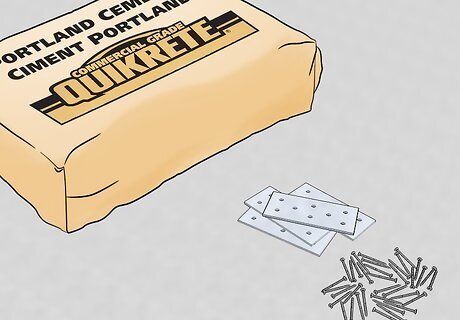
Find the remaining supplies. You will need concrete to place around the poles in the ground, as well as gravel to create a level ground-layer and provide drainage. Use a portable mixer if you are placing many poles. You will also need galvanized screws, screw-in and straight roofing nails, and storm clips to keep your nails anchored. You can use bolted plates to attach the poles together instead of cutting notches in them as well.
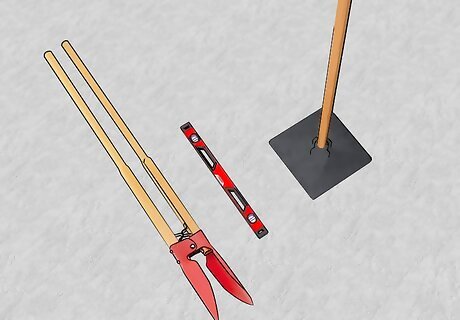
Get the right tools. Part of the attraction of building a pole barn is the simplicity involved in putting it together. You don't need a lot of tools, but have the option of buying/renting some bigger machines to aid in the building process. You will need a tool to use to dig the holes for the poles. You can choose between using a post-hole digger or a tractor-powered auger. The latter is obviously less time consuming, although it is much more expensive to rent. Another option is to check for a truck mounted hole drilling service in your area. You will need a laser-level and carpenter's level, an electric drill with the attachment for roofing screws, a hammer, a miter or circular saw, and a hand saw. You have the option of renting a backhoe for this project, although it is not required. You can also use a large tamper to help level the post-holes for the poles.
Preparing Your Area
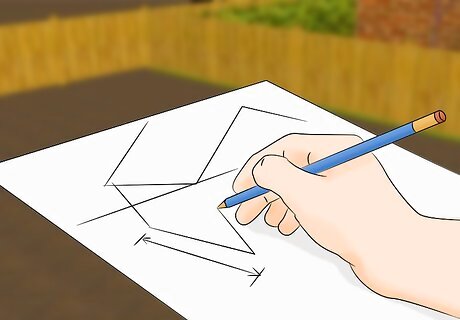
Measure the space. Before you start building, it is imperative that you get an accurate measurement of your space. This will help you to buy an accurate amount of supplies and reduce the stress in building. Walk around your space to decide how wide/long you want the barn to be. Once you've gotten a general space marked off, take exact measurements and keep track of them on a notepad. Decide how high you want your structure to be. If you plan on using it as a garage or a storage shed, a minimum of 8 feet (2.4 m) is required. You can build it as tall as you would like though; just remember that you will have to work on the roof from the tops of the poles once they are in the ground. Make sure that the area you choose has good drainage to avoid flooding in the rainy season.

Determine if there will be water and electricity going to the building. If so, then you will need to hire someone to set these up. You will also need to call 811, the national Digline to have utility companies come out and check for pipes and wires underground.
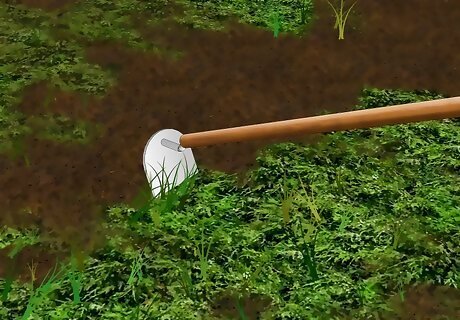
Remove any obstacles in the area. Pull out any shrubs or trees in the space where you plan on placing your structure, in addition to a 5 foot (1.5 m) wide space around it. If you have grass down, use a sod-cutter to remove it and cut it away in pieces. It can be replanted in another area of your yard if you desire, or be used to start a compost pile.
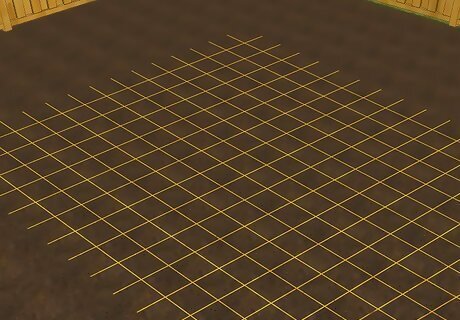
Level the ground. Make sure the area you are working with is level. It is easiest to use a tractor to do this, by moving soil from one area to another. You can do this manually though, especially when the area you are working on is already pretty level. Check to see if any base rock is needed to build up the floor of the barn. If so, then add 4 to 6 inches of decomposed granite or a similar type of smaller, easily compacted gravel material for a dirt floor and drainage.
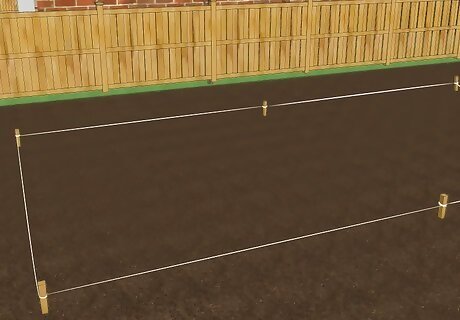
Create a string-line. You do this to mark the outline of the building you plan on making. This will make laying out the post-holes much easier, and help to keep the structure in perspective during the beginning stages. Put a small stake in each of the four corners of your building, and then wrap a long piece of string or twine between each stake.
Building Your Structure
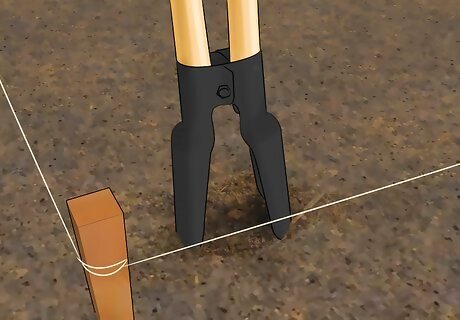
Dig the holes. For this, you can use your tractor-powered auger or your post-hole digger. Depending on how high you want to build your structure, you will need to make the holes at least 3–5 feet (0.9–1.5 m) deep. Many experienced builders say the pole needs to have 1/3 of its length in the ground, especially for an open-sided pole barn. You don't have to build a foundation for a pole barn, but it is vital that your posts are stable so that even extreme weather conditions and accidents won't move them. Be sure to consider the primary wind direction and build accordingly. Measure your poles or square posts to see how wide you need to dig the holes. Make sure to add a few inches of width to the hole so that the posts are guaranteed to fit. Keep your poles no more than eight feet apart. You need your structure to be strong by keeping these foundation poles close enough together that they aren't each forced to subjected to too great of a load. However, you can also research larger pole barn plans, which may require placing the poles further apart than eight feet.

Mix your concrete. You will need enough to add 12–24 inches (30.5–61.0 cm) in the bottom of each hole depending on the size of your poles. Tamp the inside of each hold to make the bottoms of each as flat and sturdy as possible. Drop each pole inside the holes into the concrete to add stability. Make sure that they are completely vertical before leaving them to set. Make sure that you have staking and bracing material for two sides of the poles to keep them in place. It is important to prevent them from moving. They will need to be left for 2-3 days to give time for the concrete to set completely. This way you don't run the risk of accidentally knocking the poles over before they have been stabilized. Make sure the corners are exactly square—at 90 degrees—and the spacing between the poles is exact, so that you won't have problems completing your pole structure later.
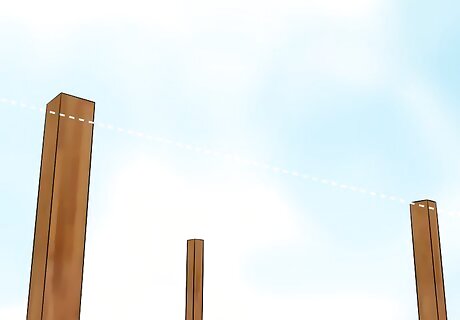
Even-out the height of the poles. Even if your poles were all exactly the same height when you started out, because the holes are not all the same size your poles are likely uneven now. Use a laser-level to mark off the tops at the same height. Use scaffolding or a sturdy ladder to climb to the top of each of the poles and remove the excess height. You can do this right before you install the roof support beams. If you would prefer not to climb the poles afterwards to measure them, you have the option of inserting each pole in the hole before concrete, measure the distance on the base, removing them, and then cutting them to size. This requires a lot of labor hauling the poles in and out of your post-holes though.
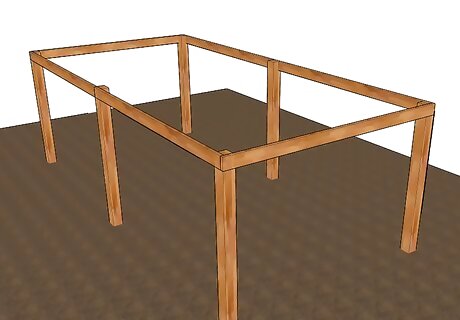
Add the roof-support beams. These are the first and most difficult horizontal boards to place. You can choose to cut notches to fit the boards in each of the poles or place them across the top using metal plates. Use your level to make sure the boards are parallel to the ground, and secure them with screws or lag bolts to make sure they are stable. These are the boards that connect between each of the poles, making a giant rectangular shape.
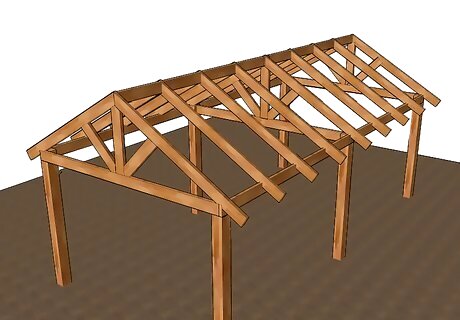
Build the trusses. The trusses are the triangle-shaped roof beams that will be placed width-wise across the roof-support beams. These will have a board that runs parallel to the ground, as well as two additional boards that meat in the center at an angle. Measure the base-board to fit across the roof-support beams, and then choose the angle at which you want the roof to slope. Miter the edges of the upwards-angled boards so that they meet flat together at the joints. When they are put together, lift them up (with the help of others) onto the roof beams. Use metal plates to secure them to the base, lining them up over the poles. Add a beam down the center for added support. If you are building a larger barn, then check with a local truss company for costs of building trusses, delivery, and crane service for setting them.
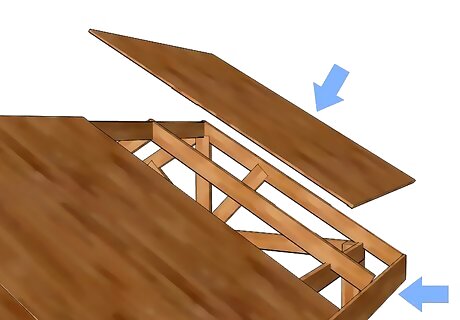
Add additional boards for support. You will need to nail boards across the roof and between the poles for the siding to be attached to. Be sure to use a level to make sure they run perpendicular to the boards they are nailed to. The number you use will vary depending on the size of your structure but at least one additional board should be placed on each section. If you plan on adding walls, nail 2x4s along the perimeter of the structure at the base. This will give the siding something to attach to on the bottom. Consider using one size bigger board that has been pressure treated and that is at least 6 inches off the ground to protect from rotting. Add boards between the beams to act as studs for a door or window. Create a frame for a door by nailing together boards in the shape and size you want, and cutting out any excess pieces. If you are going to build any stalls, feed or tack rooms, or feeding mangers with in ground posts, then use pressure treated boards for framing that can come into contact with ground.
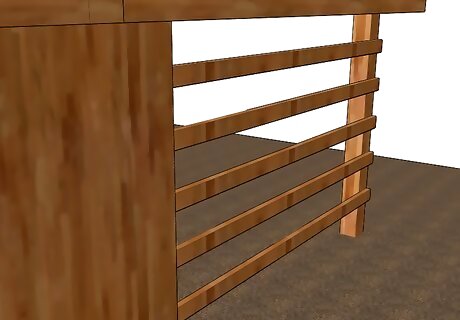
Add the siding. Although you can choose to leave the sides of your barn open, adding walls is easy. Take your plywood and cut to size. Nail it to the support boards along the outside edges of the building. To take it one step further, you can add wood siding on the outside to make the building look nicer.
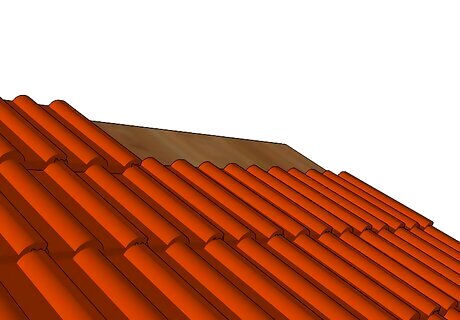
Install the roof. If you chose to use a metal roof, then your pieces should be cut to fit. Install them by tapping the screws in place over the struts, and then use the drill (with roofing attachment) to finish inserting the screws. If you use shingles, nail down plywood over the entirety of the roof, and then layer the shingles and attach them with 3-4 nails apiece. You usually need to put down a felt or tar-paper underlayment before the shingles.
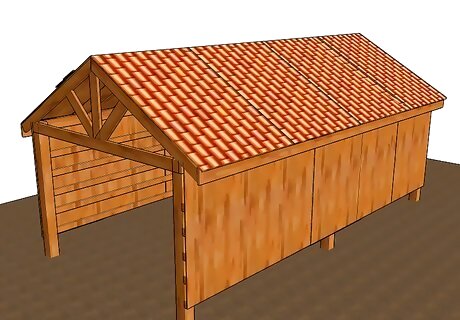
Add doors or windows. If you added extra support and framing for a door or window, you can add it to the barn at this point. You can also choose to leave it as an open-air door or window, which is common for pole barns.




















Comments
0 comment